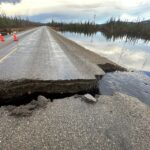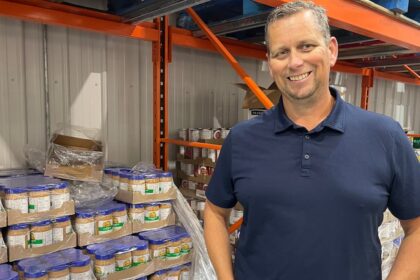There was a time when a pipeline following the Alaska Highway had significant backing. That time is long gone The DJs at the Kopper King played disco and the lines at the Yukon Theatre stretched around the block for the new science fiction phenomenon Star Wars. The Yukon News was still the new newspaper in town and its headlines were about oil embargos and geopolitical crises. Oil had just started flowing through the recently completed pipeline from the North Slope to Valdez and onto the tankers headed to Bellingham, Washington. Thousands of engineers, welders and man-camp chefs were available for another big project. By the mid-1970s, it was obvious what needed to happen next: a big gas pipeline to get Alaska’s gas — sitting there in vast quantities under the tundra right beside the North Slope oil — to markets in the Lower 48. But liquefied natural gas tankers were an impractical novelty at the time. The gas would need to go the same route as the Alaska Highway. The latter had been built just 30 years before. Putting a gas pipeline along the route was a no-brainer to many of the men — they were mostly men — on both sides of the border who had worked on the highway earlier in their careers. Canada and the United States signed a treaty. The detailed engineering work started and the right of way was mapped, something that still startles homebuyers in Mary Lake if they take a close look at how the land on the other side of their new back fence is labelled. The pipeline was going to be big. A 48-inch pipe through the Yukon. Over two billion cubic feet of gas per day, which if it was operating today would make Alaska a bigger gas producer than some Middle Eastern countries. Then the 1981 recession hit. Interest rates skyrocketed to 20 percent. Major resource companies like Dome went bankrupt. No one was ready to risk billions in a pipeline. According to legend, a fellow in Porter Creek, who had bought a welding truck to cash in on the boom, parked it in his yard to wait for conditions to improve. It would be a long time. Realtors in Mary Lake felt pretty safe telling clients the massive pipeline in the backyard was never going to happen. Then, in the early 2000s, the idea came back. Conventional gas fields in Alberta and the Lower 48 were dwindling. Alaska needed more cash as oil production declined. The Yukon government salivated over construction jobs and millions in annual income, fuel and property tax revenue. Homeowners looked forward to cheap natural gas heat. Environmentalists mobilized to block the project. Then the project got hit by something even more unexpected than the 1981 recession: fracking. Thanks to a remarkable technological revolution, previously uneconomic gas in the Lower 48 became cheap and abundant. They didn’t need Alaska gas or a pipeline facing a lot of costly Canadian mountains, permafrost and procedural hurdles. Ironically for the Yukon, even if Lower 48 gas ran out today they still might not build a pipeline from Alaska. It would probably stop in northeastern B.C. Canadian drilling is one of the most innovative parts of our economy. Among the most efficient in the world thanks to geology and relentless improvements in technology and operational efficiency, gas producers can make money even at the low local prices caused by Canada’s lack of export pipelines. And they have huge amounts of gas left to frack. But that doesn’t matter. Alaska’s luck seems to have turned, and the opportunity involves shipping gas west, not east. Alaska Governor Mike Dunleavy, backed enthusiastically by the new administration in Washington, is promoting gas exports to Asia. The massive $44-billion Alaska LNG project would involve a pipeline from the North Slope to the Kenai Peninsula, where gas would be chilled and loaded onto tankers. As reported in Alaska’s Northern Journal, Governor Dunleavy recently visited Taiwan, Japan, Thailand and Korea to seek buyers for the gas. Taiwan’s government-owned energy company signed a “non-binding letter of intent to buy one-third of the LNG produced by the Alaska project” and is considering investing as well. Committing to buying a lot of Alaskan gas is also a smart move for Asian countries in the middle of fraught trade negotiations with the United States. The New York Times reports that American officials are pushing for announcements involving Japan and Korea as early as June. Alaska (and British Columbia) are also more secure sources of energy for East Asia than Russia or the Middle East. If the Alaska gas goes west, and Fort Nelson gas keeps going southeast, the Yukon will find itself in a gas infrastructure no-man’s land. We will continue to truck in propane, diesel and LNG. And the realtors of Mary Lake will continue to reassure their clients there is little chance of economic activity along the Whitehorse right of way. Clarification: in my recent column, “A debt-fueled pre-election budget,” I referred to this fiscal year’s $88-million deterioration in the Yukon’s Net Financial Assets by the shorthand phrase “cash deficit.” To be clear, it also includes some non-cash items such as actuarial changes to employee benefits, environmental liabilities and land inventory. Keith Halliday is a Yukon economist and the winner of the Canadian Community Newspaper Award for Outstanding Columnist. The audiobook version of his most recent book Moonshadows, a Yukon-noir thriller, has just been released.
Monday, 22 Dec 2025
Canada – The Illusion
Search
Have an existing account?
Sign In
© 2022 Foxiz News Network. Ruby Design Company. All Rights Reserved.
You May also Like
- More News:
- history
- Standing Bear Network
- John Gonzalez
- ᐊᔭᐦᑊ ayahp — It happened
- Creation
- Beneath the Water
- Olympic gold medal
- Jim Thorpe
- type O blood
- the bringer of life
- Raven
- Wás’agi
- NoiseCat
- 'Sugarcane'
- The rivers still sing
- ᑲᓂᐸᐏᐟ ᒪᐢᑿ
- ᐅᑳᐤ okâw — We remember
- ᐊᓂᓈᐯᐃᐧᐣ aninâpêwin — Truth
- This is what it means to be human.
- Nokoma











